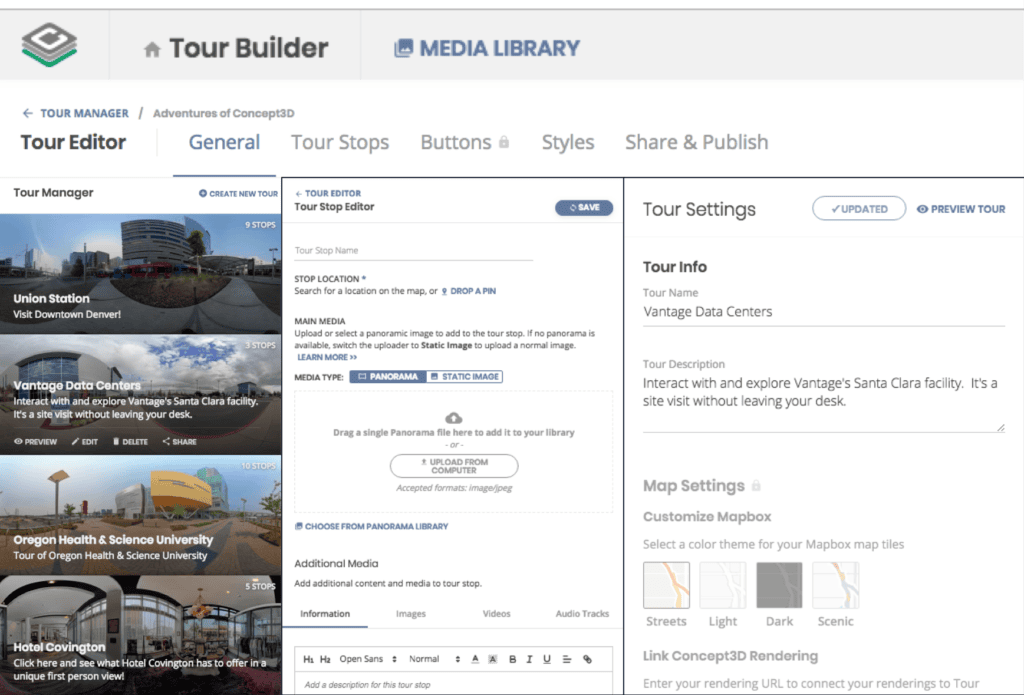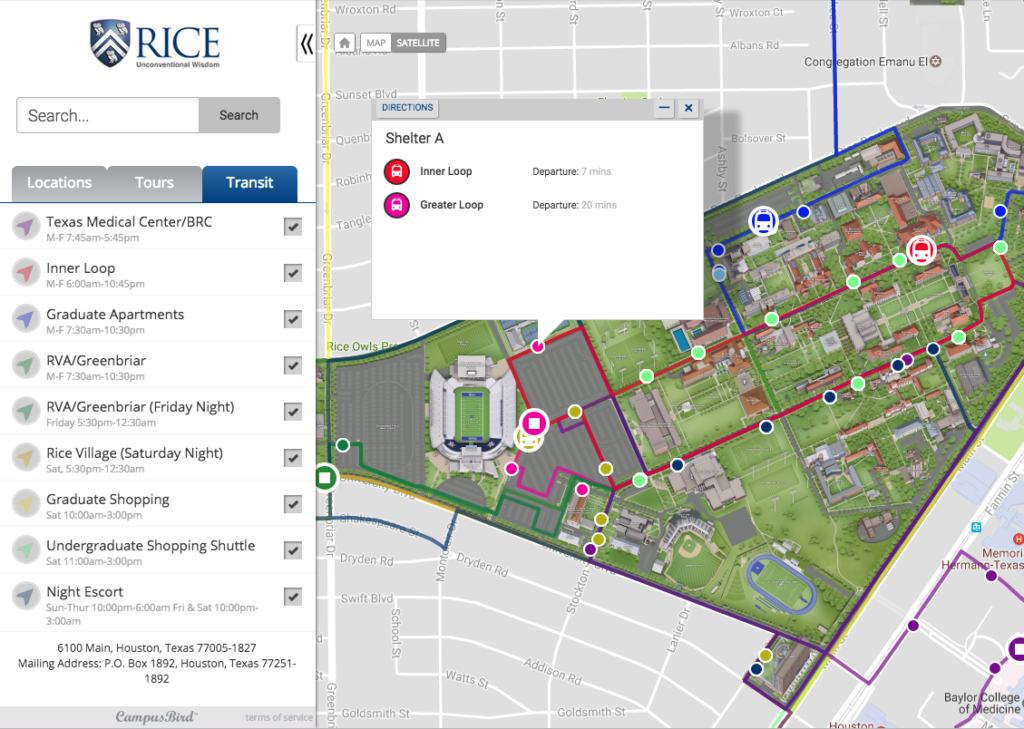Few business models have seen as rapid of a rise as SaaS. Short for software-as-a-service, it’s scheduled to become an $85 billion global industry by the end of this year. Think Netflix, but for business software. SaaS essentially describes any tool or application in which you pay for ongoing use, maintenance, and updates, rather than a one-time fee for unlimited use.
The benefits of SaaS reach far. There’s a reason this industry has seen such rapid growth. And in more ways than one, it is also transforming the potential and possibilities of virtual mapping. Understanding these benefits can provide a better understanding of just what lives at the intersection of SaaS and map making software.
The Many Benefits of SaaS
Many technology experts have attempted to break down the benefits of SaaS. It is a radically new business model, after all. This classic IBM article lists five advantages that are worth highlighting:
- Reduced time to benefit, since the software is already installed and in most cases only needs minor adjustments for each company.
- Lower costs, as licensing, customer support, update, and development costs are spread between many customers.
- Scalability and integrations, especially with other SaaS model. Since this type of software tends to be built in the cloud, scaling up is less difficult.
- Ease of new releases and upgrades, performed centrally by the vendor in a way that all current customers benefit.
- Simple proofs of concept, which can be tested separate from a live environment and merged once live to reduce upgrading possibilities.
We would add a few more to that list. In addition to continuous upgrade, customer support also becomes more natural. The scalability of the solution makes live, human support easy to implement for the vendor, with all customers benefiting in the process.
Finally, SaaS provides flexibility in the form of global access and diverse payment options. Uncoupled from a server, it lives remotely in a way that allows anyone from all across the world to access it with no restriction or lag issues. Through a more diverse payment system, even small and medium-sized businesses can easily take advantage.
How SaaS Became the New Business Norm
Given these benefits, it’s no surprise that SaaS has thrived in recent years to become a major segment of the larger technology sector for businesses. Chances are your business has at least one, probably more applications running as a service and in the cloud. How did SaaS move so quickly to become the modern business norm?
You might be aware of SaaS offerings in a number of industries. From business solutions to consumer products, we’ve almost become too conditioned to it. Do you really remember that last payment to Amazon Prime, made in exchange for faster shipping and an entertainment library? Probably not. Similarly, your business accounting platform, CRM, and ERP could and probably are SaaS solutions.
Lower sticker price compared to a one-time investment, the convenience of productivity and functionality at your fingertips, and the real-time nature of the software have also contributed to the rapid rise of SaaS. That’s why (and how) the idea took less than a decade to come from nowhere and overcome more traditional business models.
What Helps Virtual Maps Thrive?
Let’s shift gears for a moment and consider the apparently unrelated concept of virtual mapping. The two concepts are unrelated only at first sight; more on that later. First, it makes sense to dig deeper into what makes modern virtual maps so valuable and beneficial.
The Importance of Personalization and Customizability
Yes, you could leverage Google maps. But should your business go exclusively that route? The short answer is no. Consumer-directed maps like Google Maps, Apple Maps, and Waze have great benefits for help consumer and visitors to find a business but these are meant for consumer consumption. Above all, they build a templated approach that every business can leverage in the same way. It’s difficult to build a solution specifically designed for your organization when all your competitors can build the exact same solution.
Instead, you need to get personal. You need to make sure that your audience gets an experience specifically designed for your needs. That’s already standard with other parts of the online experience, where almost 60% of users are willing to give away personal data in exchange for a relevant experience. Why would that same truth not hold true for virtual reality maps?
Personalization, in fact, has become a core expectation for any online experience. In the age of social media and instant gratification, digital users of all kinds – from teenagers to senior executives – expect relevant experiences at their fingertips. That’s only possible with a mapping solution designed for your specific company, with your specific audience in mind.

On a basic level, any commercial mapping company will offer this ability. These are the distinguishing factors from Google Maps; the ability to add your blueprint, designs, and more. That effort, though, remains surface-level. What you need is to dig deeper, and that’s where the intersection with SaaS comes into play.
Recall that one of the core benefits of SaaS is its real-time nature, both in terms of upgrades and in building out more complex solutions. Now, transfer that concept into a map designed specifically for your business. It still runs on a platform with central updates but optimized for the customization you build into it. That combines with the added flexibility of payments and access to pave the way for truly personalized mapping solutions.
Interactivity as a Core Business Feature
Any business building a map has to ask one core question: what do you want your user to accomplish? In some way, at some point, the answer to that question has to revolve around interactivity. A simple, static map doesn’t mean much in an environment where your users are mainly mobile, and expect to get some tangible advantage out of it.
Again, it makes sense to consider this concept in the context of public solutions like Waze. When was the last time you pulled up an app like Waze simply to look at the maps? Chances are you wanted information on traffic, routes, or nearby restaurants. Even getting that information will always require interactivity.
In other words, simple 3D renderings will not be enough to make a modern map work, no matter how beautiful or accurate they might be. Yes, they might get your audience’s attention. But they will not get their usage, especially not overtime for repeat customers or internal audiences. Without interactivity, their usage rates will collapse as your audience looks for more practical solutions.
Again, the comparison to your overall online experience is instructive. Interactive content has taken over content marketing, with significant improvements in engagement, education, and lead generation compared to more static websites. Whether on a phone or a desktop device, your audience expects to be involved in the experience. How can you make sure you actually allow them to?
On a map, that interactivity can be pretty basic. It might include navigating through your hospital or clicking on specific prompts for more information that would otherwise crowd the screen. But it doesn’t have to stay at this surface-level. And again, the rise of SaaS has provided a pathway for upping the complexity and possibilities.
Through an SaaS model, vendors can provide interactivity levels on a more comprehensive, scalable basis. You probably don’t want to or simply cannot build solutions designed for your individual customers at scale, without a massive cost that involves anything from customer journey mapping to the actual programming. You can, however, leverage existing capabilities for your own purposes.
The central nature of SaaS solutions allows you to both tap into existing solutions and build your own interactivity possibilities from there. That sounds complex. Again, the best analogy is Netflix. If you’ve watched the viral hit Bandersnatch, you’ve seen how just a few minor tweaks can turn a formerly static medium into an interactive masterpiece. You’ll also note that the technology for this interactivity is contained within the platform, allowing various users to take advantage of it.
Expanded Possibilities Through SaaS Models
No modern virtual map, whether it’s built through 3D map software or another solution, lives in isolation. It always exists within the context of other channels, whether that be your website or another platform. Your audience doesn’t navigate to your map without context; they expect it to be a natural part of their user experience.
That’s difficult to achieve. Integrating maps or other data on a standalone solution requires significant expertise, and the bridges built can be tenuous at best. There’s a reason the consultants building these types of bridges from scratch make good money. At the same time, new integrations made possible through SaaS might just put them out of business.
As mentioned in the intro, the very possibility of integrations makes SaaS such an intriguing business model. For mapping solutions, these potential integrations become a very real business advantage. The possibilities are immense:
- Live data feeds to account for data like foot traffic, weather, and more.
- Integrations with communications software that allows for trigger-based notifications on mobile devices or text messages.
- Live bus tracking designed to help pedestrians get to the right station at the right time.
- Live video of events and other venues for anyone navigating around on the virtual app.
- Parking feeds that allow your audience to find the right parking spot before someone else does.

Leveraged in this way, modern business maps are no longer just maps. They’re information hubs, designed to give your audience every bit of data they need at a moment’s notice, exactly when they need it.
The best part is that through the advances of SaaS, this type of service no longer has to be custom-built. Bridges are built at the platform level, with only some customizations required to adjust to the specific data and specific business you look to integrate. That doesn’t just help build a more comprehensive solution but also maximizes your opportunities to scale the map experience and its potential as your business grows.
It’s still not simple. Not every mapping solution will offer these customizations, and you will most likely pay extra. The potential for your audience, though, is well worth that expense. Your audience now wants and expects a comprehensive, consistent, clear experience that doesn’t change or shift from the moment they first hear about you to the time they become customers. A map that integrates all of your other digital and non-digital efforts gets you well on your way to that goal.
Digging into the Intersection of SaaS and Virtual Maps
They’re not necessarily connected. The vast majority of the $85 billion SaaS market has nothing to do with virtual mapping. Likewise, you will find plenty of mapping solutions out there having nothing at all to do with SaaS. And yet, they intersect. Where that happens, the future is bright.
Modern maps are moving towards more customizability, personalization, and interactivity. They have to leverage connections with other assets to build a more comprehensive experience. That’s difficult to do without a solution that’s flexible, scalable, and easy to integrate.
At the intersection of SaaS and virtual mapping, therefore, lives a future with immensely high potential. We’re only at the beginning of it, but the possibilities are already obvious. Whether it’s a hospital designing a roadmap to its main building for potential patients or a college campus providing a fully integrated virtual experience for remote high school students and their parents, companies are taking advantage of these integrations right now. The future will only become more exciting in this arena.
We want to help take you on that journey. Virtual mapping is increasingly moving into new industries that are beginning to realize its possibilities. Whether you operate in an industry that’s long leveraged maps or one that’s just beginning to discover them, let’s work together to maximize your potential.
Our 3D mapping solutions are as beautiful as they are interactive and as accurate as they’re data-rich. Even better, we can adjust them to fit a number of purposes and audiences. Contact us to start the conversation, and see how you can benefit from the next generation of virtual maps.

